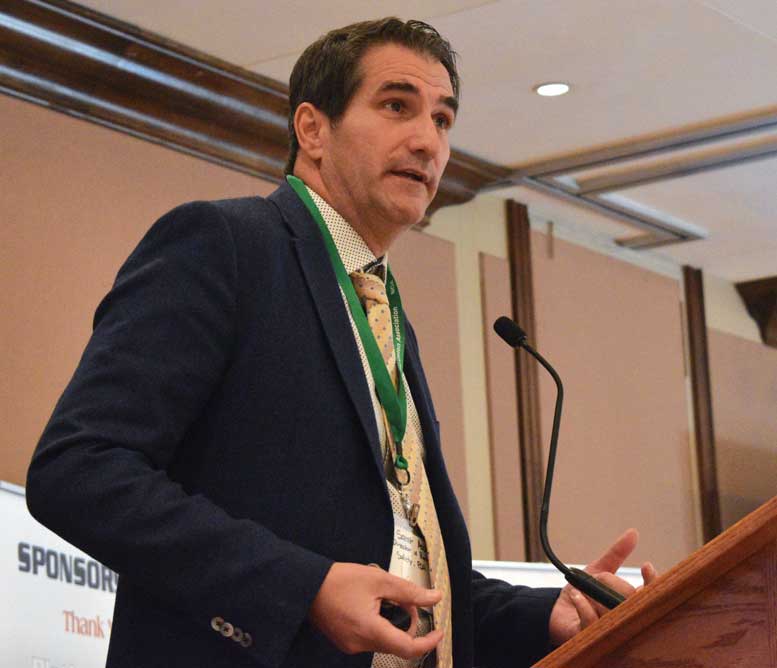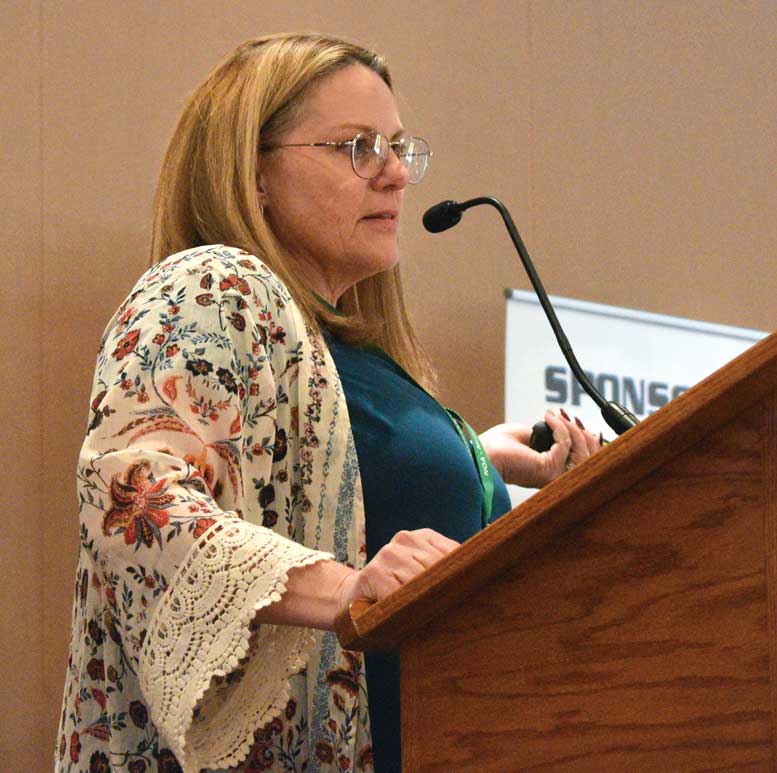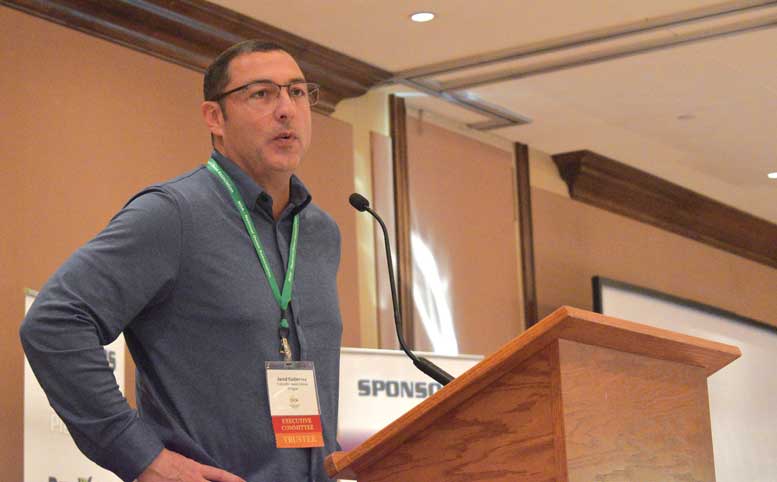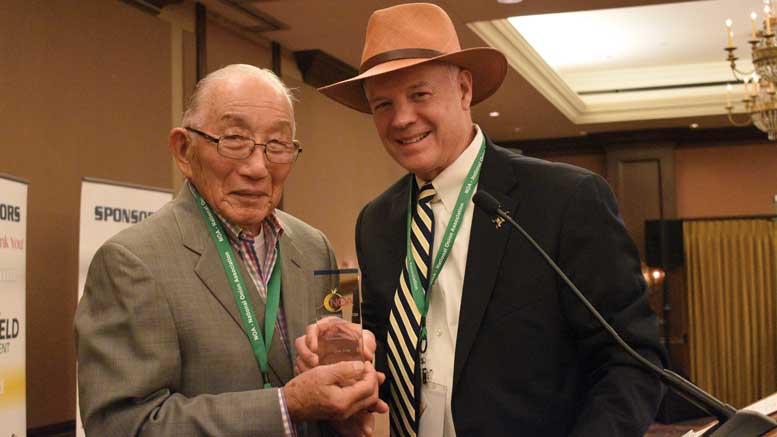|
Click to listen to this article
|
Story and photos by Dave Alexander, Publisher
The National Onion Association (NOA) landed a notable speaker for its annual convention, held Dec. 7-10 in Scottsdale, Arizona. The keynote address at the “West’s Most Western Town” was delivered by Dr. Samir Assar, director of the Division of Produce Safety for the Food and Drug Administration (FDA).

Assar has a staff of about 30 people at the FDA. That staff is roughly divided into thirds: one group is responsible for manufactured and fresh-cut processed produce, another third sets policy for raw agricultural commodities, and the rest focus on training and education. Their primary mission is to set science-based safety standards for agriculture, but Assar said he and his agency are big believers in technical assistance, education and training, spending millions of dollars every year in that pursuit.
“We need to educate before and while we regulate,” he said.
Part of the FDA’s education process is the Produce Safety Network (PSN). The PSN provides growers and packers with experts to answer questions about food safety and has located PSN staff in specific growing regions.
Educating and talking about food safety includes conversations about Salmonella outbreaks, though Assar said he is never comfortable broaching the subject. Assar said the 2020 California Salmonella Newport and the 2021 Chihuahua, Mexico, Salmonella Oranienburg outbreaks, both attributed to onions by the FDA, were a “watershed moment.” The 2021 incident logged 1,040 illnesses and 260 hospitalizations in 39 states, the District of Colombia and Puerto Rico.

The 2020 case was determined by the FDA to be from contaminated irrigation sources, possibly from animal intrusion or sheep grazing. But there is often a long delay getting investigators into the suspected contaminated operation, and not all growers are convinced onions were the root cause of the outbreak.
“Very rarely do we find the smoking gun. We have a limited ability to say ‘this is how it happened,’” Assar said. “We are often out there many months after the outbreak has occurred. What we see when we are out there isn’t necessarily reflective of what may have happened or the conditions that were apparent at the time of the contamination.”
Assar gave kudos and thanks to the NOA and onion industry at large for its response to the outbreaks. Though a new commodity-specific onion food safety best practices document was already started, the outbreaks accelerated the timeline to finish.

Referring to the “Commodity-Specific Food Safety Guidelines for the Dry Bulb Onion Supply Chain,” Assar said, “You’re an example of how industry can come together, address an adverse outbreak situation and put out best practices that are aimed at addressing and preventing that situation from ever happening again.”
Written by NOA, industry members and the International Fresh Produce Association, the new onion guidelines were released in July 2022. The FDA is using the document as an example for other commodities of how to produce good food safety guidelines.
Crop Reports
The last day of any NOA convention is reserved for crop reports. The reports are delivered by growers over breakfast in an informal setting. The 2022 growing season was a mixed bag of results, presented here in the growers’ own words.

Michigan
“We had an above average crop that went into storage good, and movement has been good. We’re pretty happy right now.”
-Bruce Klamer, V&W Farms Inc.
North Dakota
“We had a small crop, late planting and didn’t get all of our acres in. The bins were not full, but shipping is going great, so we’ll be out of onions this year.”
-Barry Vculek, Four Star Ag
Wisconsin
“We had a really nice crop and really good, brisk movement.”
-Doug Bulgrin, Gumz Farms

Colorado
“We had an up and down season. We were late to get planted. We had a little bit of hail over the summer that wiped out some of our stuff. We had a fairly average crop and should be wrapped up by mid-March.”
-Colby Cantwell, Faberberg Produce
Idaho-Eastern Oregon
“It’s been a rough year with lots of heat and wind damage. From harvest on, you can drive by and there are boxes stacked everywhere empty outside.”
-Tyler Wagstaff, Central Produce Distributing
Oregon
“In my area, it was a cool spring. The crop actually finished up pretty good. It looks good, storage is good. There are a few more mediums than normal.”
-Delbert Gehrke, AgriNorthwest
Oregon
“We’re pretty close to the same.”
-Jared Gutierrez, Columbia Basin Onion
Oregon
“After planting, we got 10 inches of rain, so everything was behind. Crops turned out to be average with a medium summer. Shipping is good and quality is good.”
-Tony Bennett, Northwest Onion Co.
Washington
“Quality is excellent. We’re going to be pretty close to what we should be.”
-Bart Connors, Skone and Connors Produce
Editor’s note: To contact an FDA produce safety expert familiar with your region, visit www.fda.gov/media/105420/download. Onion safety guidelines can be found at www.freshproduce.com/resources/food-safety/commodity-specific-resources.


